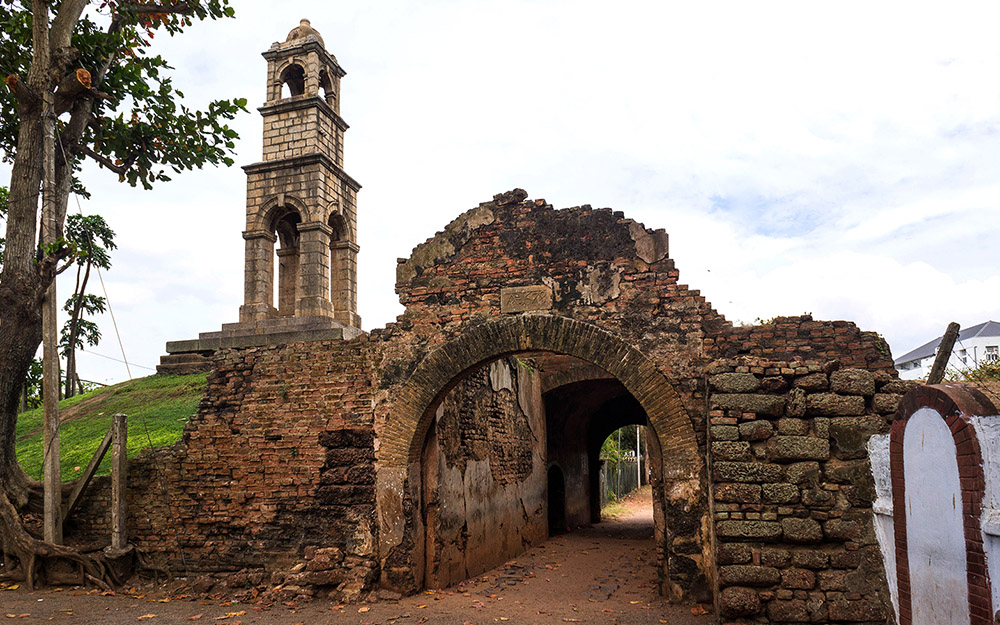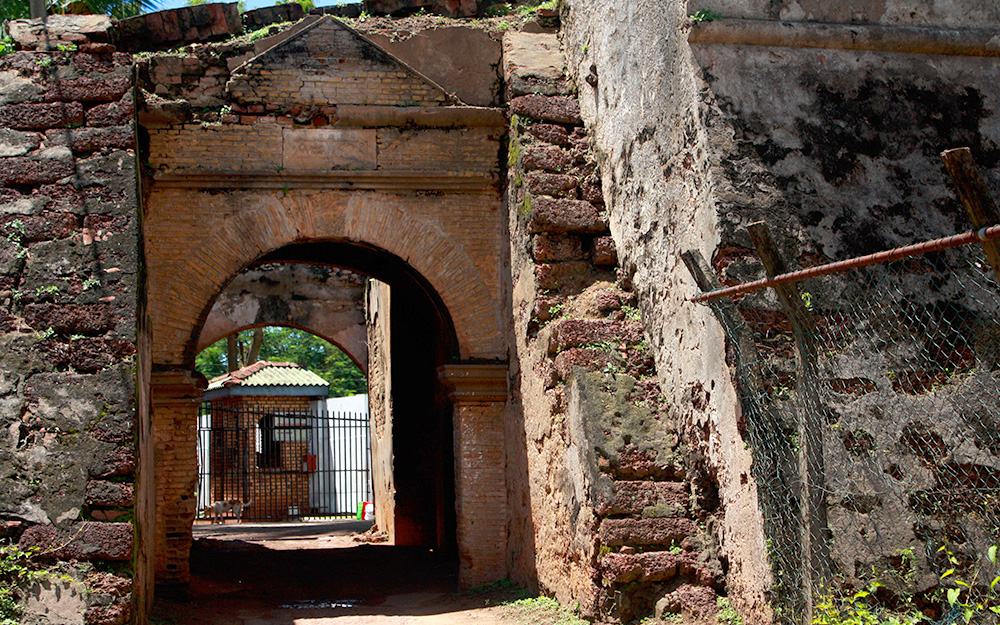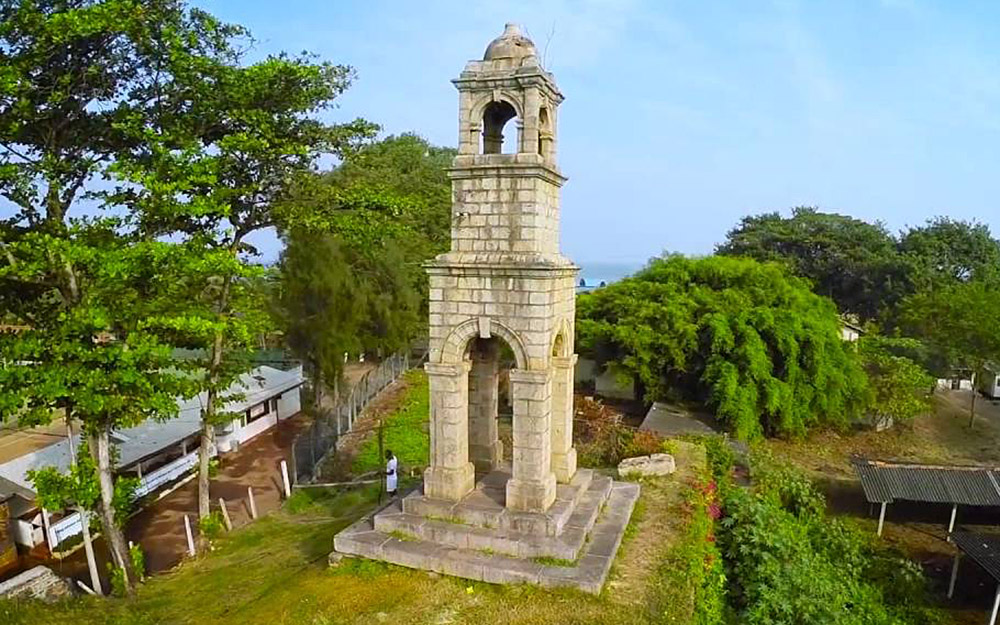Negombo Fort now just a relic of former colonial power struggles
For Sri Lanka’s former colonial powers—first the Portuguese, then the Dutch, then the British—Negombo was a west-coast trading port of vital strategic importance.
For that reason it needed defending, which is why the Portuguese built the original fort on a narrow strip of land between the lagoon and the sea,.
It was surrounded by a dry moat, and the gate was accessed via a drawbridge—but it was far from being impregnable.
In fact, as Captain João Ribeiro wrote at the time: “Negombo Fort is only a square enclosed by walls, with two redoubts and five guns. A captain and a few men, with a chaplain were stationed there.”
Which is why the Dutch had no difficulty seizing it in 1640 with a force commanded by Philip Lucasz. It was not until three years later, after several unsuccessful attempts, the Portuguese were able to retake it.
Recaptured
Despite extensive strengthening, the fort was recaptured by the Dutch in 1644 after a lengthy siege led by François Caron.
Most of the walls were demolished by cannon fire, and what was left was pulled down and rebuilt in 1672, this time as a pentagonal with four bastions.
To no avail. Despite being an important link in the Dutch maritime defences, it was over-run by the British in 1796 after very limited resistance.
In the late 19th Century, significant portion of the fortifications and most of the original Dutch buildings were demolished to make way for the construction of a courthouse, Anglican Church and prison.
Prison
Today, a considerable part of the fort’s central area is occupied by the Department of Prisons, which involved significant changes to the layout and architecture.
All that remains of the fort itself is a section of the eastern rampart with mounds at its northern and southern ends, where the previous bastions existed, and a recessed arched gateway.
Above the gateway is a slab of granite inscribed with the date 1678, and surmounted by a decorative gable and a clock tower that was built by the British.
The Anglican Church of St Stephen’s was built on one of the bastions after the land was given to the Bishop of Colombo and trustees as a Crown Grant in 1876.



